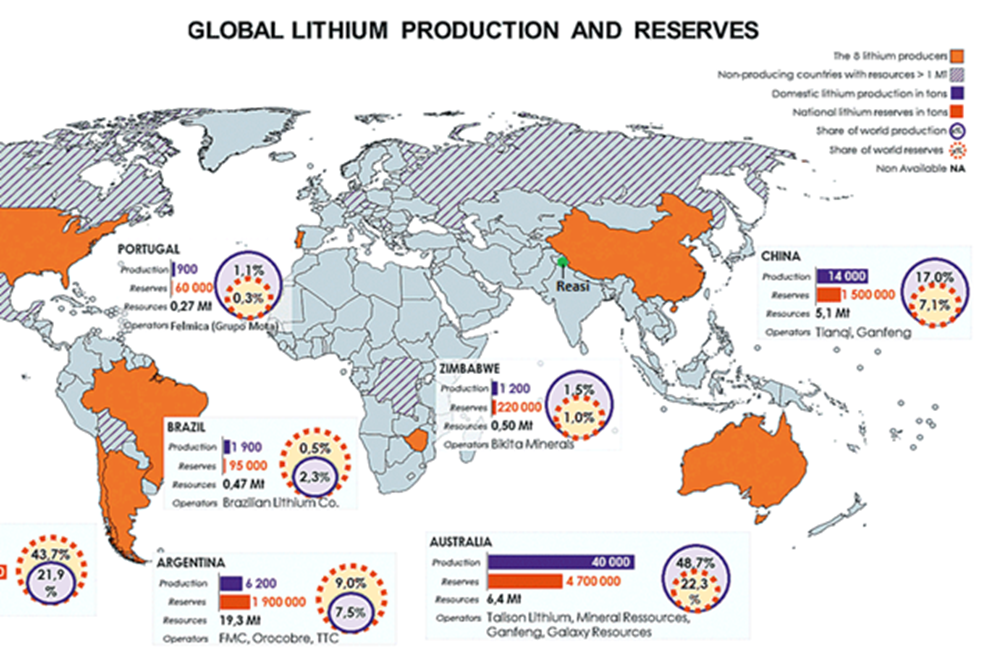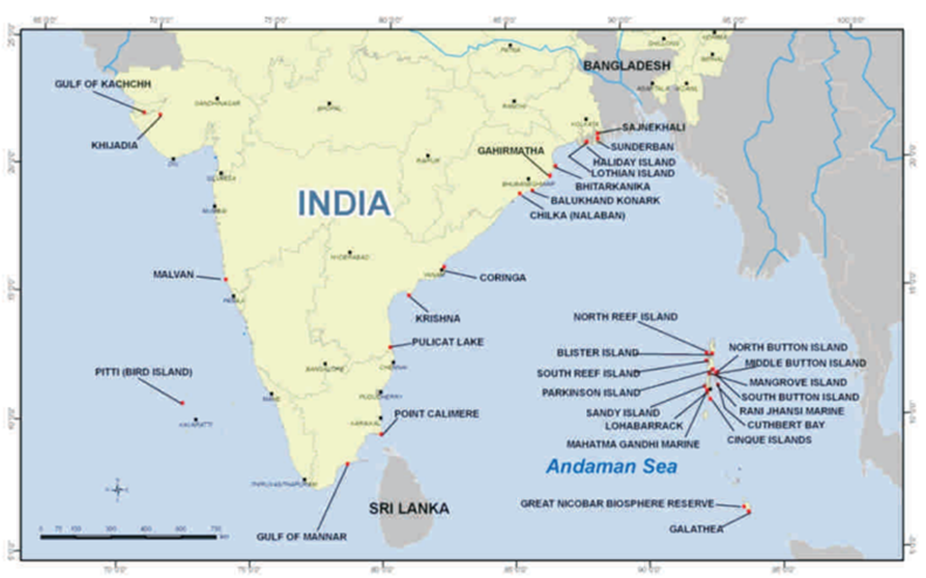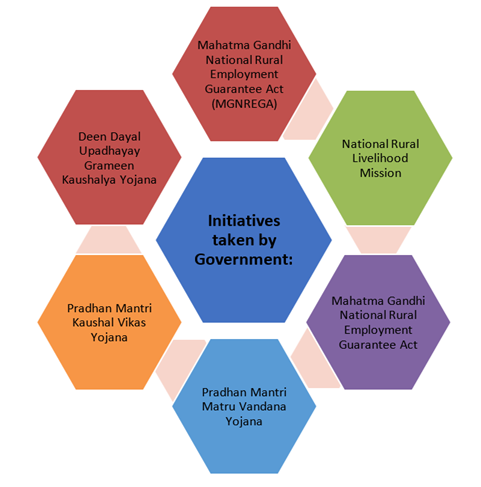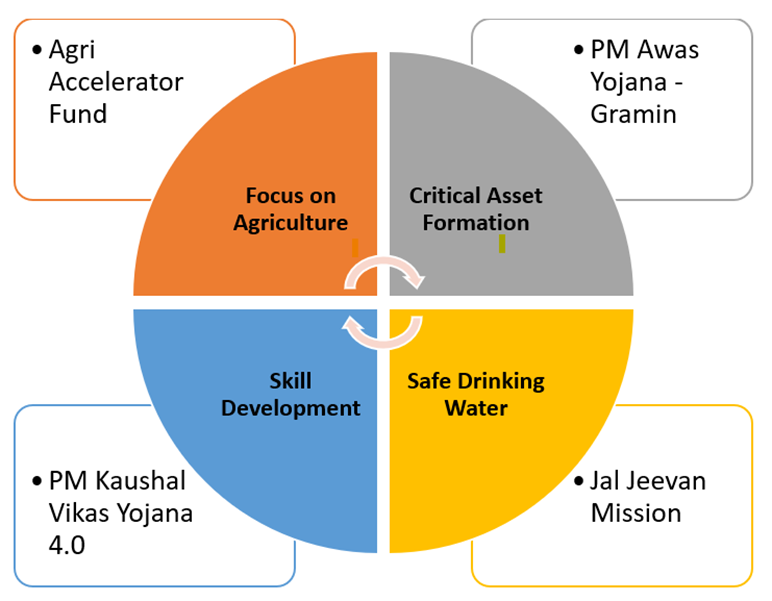Tuesday, 14th February 2023
Gender Blind AI Industry - Edukemy Current Affairs
In News: On the occasion of the 8th International Day of Women and Girls in Science, as women in AI, reflect on the gender trends and participation of women in the AI industry.
Artificial Intelligence is penetrating every walk of life, fundamentally changing the way we associate, work, and think. AI can transform societies and improve the quality of life of people through predictive, personalized, and optimized solutions, improving their health, reducing carbon emissions, and enhancing resilience against disasters among others.
AI can also threaten privacy with invasive applications, disrupt human rights, and fuel inequality. The impact of AI on societies largely depends on the motives and minds behind the technology. It is imperative to have equitable participation of diverse people, especially women, to make AI holistic and beneficial for everyone.
More women in AI needed
Underrepresentation of women in the field of AI: Women are under-represented in the field of AI and there is a growing recognition of the need for more equitable opportunities for women to realise their full potential in this rapidly growing field. As per the World Economic Forum’s Global Gender Gap Report 2022, women make up only 22 percent of the AI workforce.
Increase discrimination and Inequality: AI systems are designed without considering the experiences and needs of diverse populations to perpetuate discrimination and inequality.
Unfair credit scoring of women: Gender-blind AI designs lead to unfair credit scoring of women. Biased AI-recruiting tools have automatically filtered out job applications from women.
- AI industry can have a positive impact on society only when it is inclusive and adopts gender-sensitive approaches and this is possible when women participate in all stages of AI development and deployment.
- 81 percent of women in STEM face gender bias during performance evaluations during their careers.
Work-Life Balance Challenges: Women may face additional challenges in achieving a work-life balance, particularly in demanding technical fields like AI, which can impact their career progression and participation in the industry.

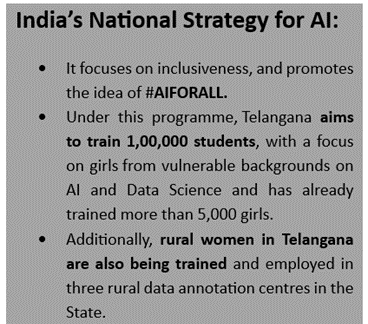
Global Gap
The mismatch between education, employment and career growth is the same at global level. Tech giants like Google and Facebook have only 10-15 percent of AI specialists as women. The disparity exists in research as well.
Growing number of studies suggest that biased AI systems can exacerbate existing gaps in the workforce and even harm under-represented communities.
Way Forward:
- Role of Private Sector: To address the gender disparity in AI, it is important to change mindsets, and accelerate efforts and investments to create opportunities for women and girls.
- Boosting Skills Development Programmes: Participation of women in AI such as skills development programs in AI designed for women, scholarships, research grants, and internships.
- Driving International Cooperation: International cooperation is crucial for promoting gender diversity and representation in the field of Artificial Intelligence (AI).
Facilitating Role in Non-Technical Roles: Women can definitely enter into non-technical roles in the field of AI such as project management, business development, marketing, ethics, governance, and sales in the AI industry.
Source: Hindu BuisnessLine
PM Ayushman Bharat Infrastructure Mission - PM-ABHIM
In News: Recently, loan agreements have been signed for PM-ABHIM with the Asian Development Bank and Japan International Cooperation Agency (JICA). The World Bank has approved $1 billion IBRD loans for PM-ABHIM.
PM-ABHIM
- PM-ABHIM was announced in Budget 21-22. It is a Centrally Sponsored Scheme with some Central Sector Components, for the implementation of the Atmanirbhar Bharat Package for the health sector.
- PM-ABHIM was launched in addition to the National Health Mission (NHM). The government provides financial assistance to States and Union Territories to set up and upgrade health infrastructure under NHM to ensure quality healthcare services.
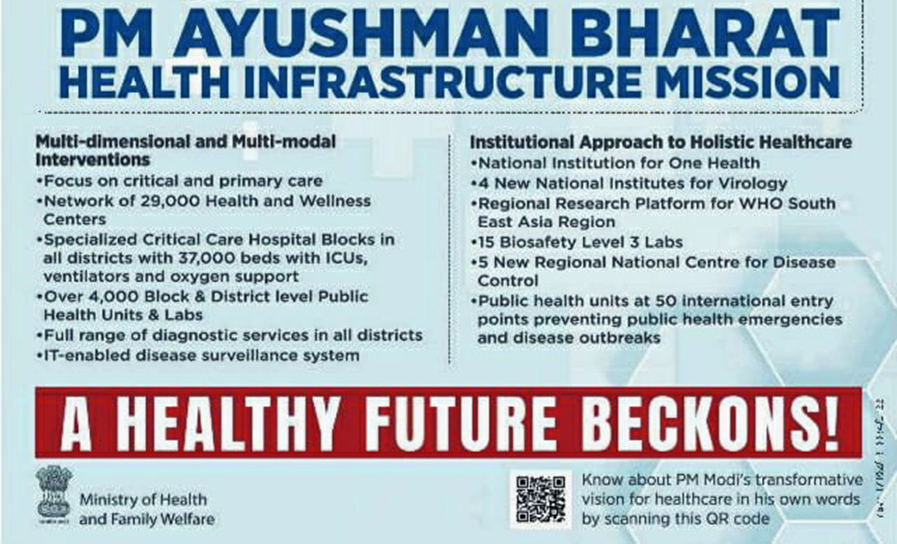
Objective:
- To strengthen the Public Health Infrastructure effectively manage and respond to any future pandemics and outbreaks;
- To increase investment in health infrastructure; and
- To fill gaps in public health infrastructure, especially in critical care and primary care facilities in both the urban and rural areas.
Centrally Sponsored Components include:
- Establishment of Rural and Urban Health and Wellness Centres; Block Public Health Units; Integrated Public Health Labs in all districts; critical care hospital blocks, five new regional NCDCs, 10 Biosafety Levels (BSL) - III and one BSL-IV and 20 Metropolitan Surveillance Units (MSUs).
Central Sector Components include:
- Establishment of Critical Care Hospital Blocks; National Centre for Disease Control (NCDC), 5 New Regional NCDCs and 20 metropolitan health surveillance units; Setting up of 15 Health Emergency Operation Centres and 2 container based mobile hospitals; and Setting up of a national institution for One Health, 4 New National Institutes for Virology, and a Regional Research Platform for WHO South East Asia Region
Source:
https://www.thehindu.com/news/national/govt-to-borrow-13879-cr-to-strengthen-health-infra-from-international-agencies/article66493903.ece
Ramping up border security against China
In News: A recent briefing during a Parliament session, the Minister of External Affairs highlighted initiatives by the government for the rapid development of infrastructure along the Northern Borders with China for strategic reasons.
About
Government’s projects on border infrastructure and connectivity include:
- Improvement of connectivity to the North-East and LAC with the betterment of roads, bridges and tunnels.
- Projects connecting India to “friendly” neighbouring states such as Bangladesh, Bhutan, Nepal and Myanmar.
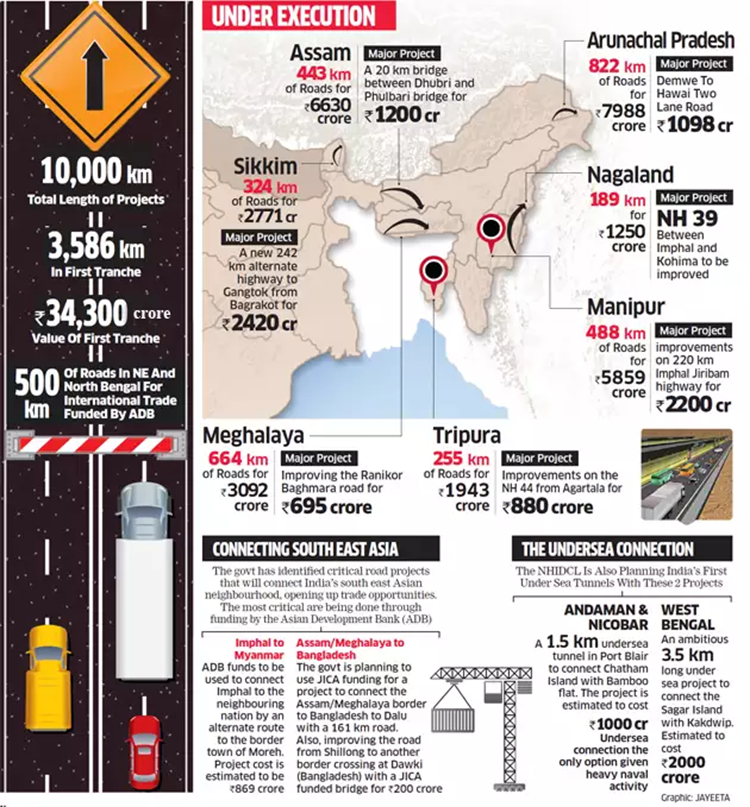
Steps taken to improve infrastructure at the border:
Improving connectivity to LAC
- Initiatives in the north and east along India’s 3,488 km border with China (Line of Actual Control or LAC), including ramping up infrastructure on the Indian side in Ladakh, Himachal Pradesh, Uttarakhand, Sikkim, and Arunachal Pradesh
- Improvement of cross-border connectivity to neighbouring countries via highways, bridges, inland waterways, railroads, electricity lines and fuel pipelines, modernising and constructing integrated check posts (ICPs) at all the border crossings to smoothen trade,
- Funding and construction of infrastructure projects in neighbouring countries.
Projects in the neighbourhood:
|
Nepal |
Bangladesh |
Myanmar |
Bhutan |
|
Railway links to Nepal;
The Mahakali motorable bridge;
South Asia’s first cross-border petroleum products pipeline” |
Railway links to Bangladesh;
The Maitri Setu between Tripura and Bangladesh;
High-Speed Diesel pipeline
|
The Kaladan Multi-Modal Transit Transport Project (KMTTP) which includes a 158 km waterway,
the Sittwe port project and road to Mizoram; |
Bhutanese dry port in Pasakha bordering West Bengal being developed under an Indian government grant. |
Need to ramp up infrastructure projects at the border:
- There has been a long-standing territorial dispute with China. The ongoing standoff along the entire LAC since April 2020 when the Chinese army amassed troops along the border, which resulted in the Galwan clashes, the first such violent incident in 45 years.
- The Indian forces have lost access to 26 of 65 patrolling points along the LAC since 2020 as per an official Security Conference.
- To allay concerns in neighbouring countries in light of the recent drop in share value and credit ratings of the Adani Group that has been highlighted internationally. It is in talks for a number of projects, including electricity with Bangladesh and Nepal, ports in Myanmar and Sri Lanka, as well as renewable energy projects in the region.
Source:
https://www.thehindu.com/news/national/explained-how-is-govt-ramping-up-border-infrastructure/article66498281.ece
InfoCrop - Edukemy Current Affairs
In News: Indigenous crop simulation programme to help against heatwave damaging wheat harvest
About the News:
- Scientists at the Indian Agricultural Research Institute (IARI) in Delhi caution against the looming threat of heatwave damages to wheat farmers in Punjab and Haryana.
- Previously in 2022, farmers from Punjab and Haryana experienced 6-10 per cent and 4-5 per cent yield loss
- The findings have been based on InfoCrop version 2.1 which is India's only dynamic crop simulation model which was developed by the IARI in 2015.
- Currently, the country does not have a system to forecast crop loss due to heatwaves or most other extreme weather conditions especially factoring against real-time changes.
- At present, the Mahalanobis National Crop Forecast Centre, under the Union Ministry of Agriculture and Farmers Welfare, provides pre-harvest forecasts for eight major crops at the national, state, and district levels.
Important features
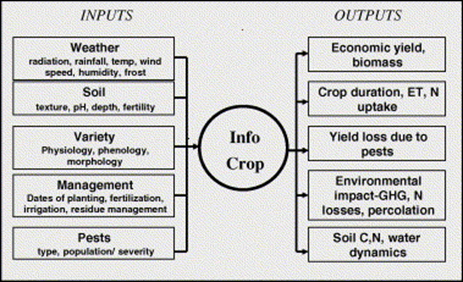
- It is a dynamic crop simulation model developed by the Indian Agricultural Research Institute (IARI) to forecast the impact of climate change on crop yields in real time.
- InfoCrop is available for free on IARI's website and can provide pre- or in-season crop yield forecasts with an 85% accuracy rate.
- The model can be used to assess crop loss in the aftermath of an extreme weather event and provide relief packages.
- InfoCrop has the life cycle data for almost all the local varieties of 11 crops: paddy, wheat, maize, sorghum, pearl millet, pigeon pea, chickpea, soybean, groundnut, potato, and cotton.
Importance of InfoCrop:
- InfoCrop has global precision standards with an 85% accuracy rate, similar to other widely used dynamic models.
- The simulation can help study the long-term impact of climate change and crop management practices on yield.
- The model is more suited for India as it has life cycle data for almost all local varieties of 11 crops.
- Simulation results from InfoCrop can be used to forecast crop yield, assess the crop loss, and improve crop yield.
- It supports India’s soft diplomacy as researchers in as many as 46 countries, including Argentina, Brazil, and Bangladesh, has downloaded the model.
- Previously, the model's projections for 1976-2100 were included in the first two national communications submitted to the UN Framework Convention on Climate Change highlighting its importance.
https://www.downtoearth.org.in/news/science-technology/as-a-heatwave-spectre-hangs-again-over-india-s-wheat-harvest-its-home-grown-crop-simulation-model-can-help-85499
India - ASEAN Digital Work Plan 2023
In News: The 3rd ASEAN Digital Ministers (ADGMIN) meeting with India was held on a virtual platform.
About
- Digital transformation is essential for achieving an inclusive and equitable society, sustainable development, and empowering citizens through digital means.
- It aims for shared prosperity.
Key highlights of India-ASEAN Digital Work Plan 2023
- The work plan includes capacity building and knowledge sharing in emerging areas in the field of Information and Communication Technologies.
The key areas include
- Artificial Intelligence in Cyber Security,
- Application of IoT & AI in Next Generation Smart City & Society 5.0,
- Sustainable Data and Transport Network for Future: Standards and Applications,
- 5G technologies for IoT and future trends,
- Role of ICT in implementation of Digital Health and Security protection and assessment for future network, etc.
The ongoing and proposed projects in ICTs will strengthen collaboration between India and ASEAN by leveraging complementary strengths of each other.
|
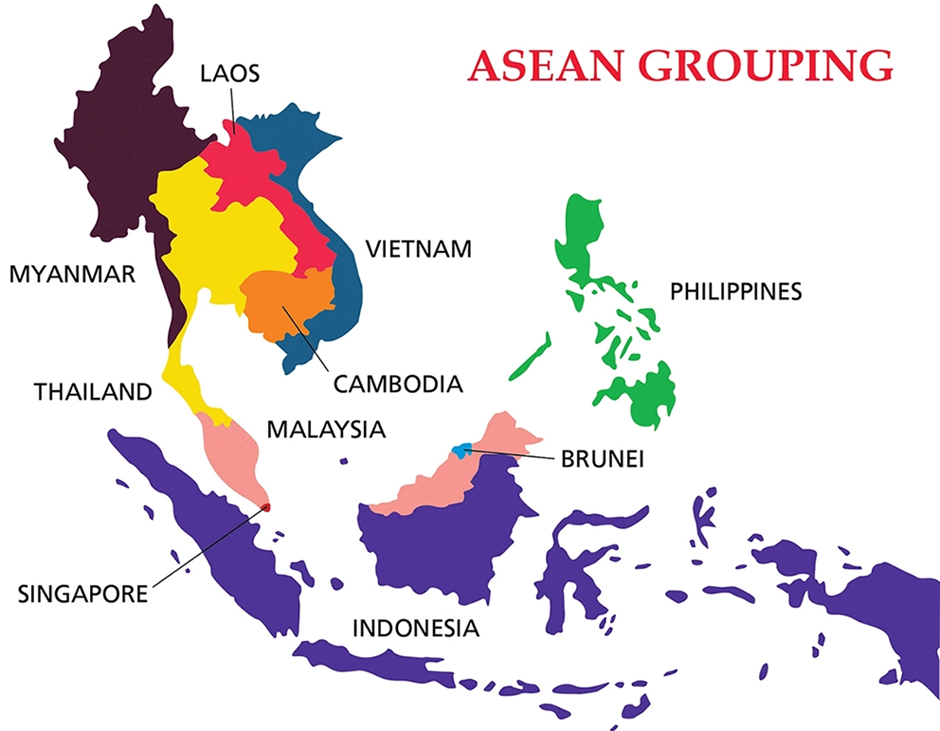
https://pib.gov.in/PressReleaseIframePage.aspx?PRID=1898093
Sarojini Naidu - Edukemy Current Affairs
In news
- The National Women’s Day 2023 celebrations will strive to establish Sarojini Naidu as an inspiration for the women who aspire to lead the nation and bring a change in their communities.
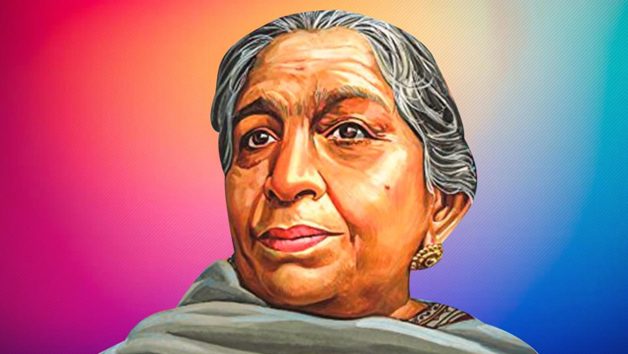
About
- Sarojini Naidu, (born February 13, 1879, in Hyderabad) a political activist, feminist, poet.
- After some experience in the suffragist campaign in England, she was drawn to India’s Congress movement and to Mahatma Gandhi’s Non-Cooperation Movement.
- Naidu was elected as the first Indian woman president of the Indian National Congress(INC) in 1925(Kanpur Session) and continued to hold this position till 1928.
- In 1930, Naidu was selected by Gandhi to lead the Salt Satyagraha, a nonviolent protest against the British monopoly on salt production in India.
- She accompanied Mahatma Gandhi to London for the Round Table Conference for Indian–British cooperation (1931).
- In 1947 she became governor of the United Provinces (now Uttar Pradesh).
Sarojini Naidu also led an active literary life. Her works included:
- The Golden Threshold (1905)
- The Bird of Time (1912)
- The Sceptred Flute (1928)
- The Feather of the Dawn (1961)
https://economictimes.indiatimes.com/news/new-updates/sarojini-naidu-birth-anniversary-why-is-it-celebrated-as-national-womens-day/articleshow/97859146.cms
Combating Filariasis - Edukemy Current Affairs
In News: A nationwide Mass Drug Administration (MDA) was launched by the Ministry of Health and Family Welfare to end filariasis disease.
About
- Lymphatic filariasis, commonly known as elephantiasis, is a neglected tropical disease. Infection occurs when filarial parasites are transmitted to humans through mosquitoes. Infection is usually acquired in childhood causing hidden damage to the lymphatic system.
- Lymphatic filariasis impairs the lymphatic system and can lead to abnormal enlargement of the body parts, causing pain, severe disability, and social stigma.
- A big chunk of people belonging to tropical and subtropical regions are affected by it as the carrier is mosquitoes.
- Ahead of the global target, India has set 2027 as the anti-filariasis year, ie, elimination of filariasis.
- High Burdened states Bihar, Chhattisgarh, Jharkhand, Maharashtra, Uttar Pradesh, West Bengal, Karnataka, Odisha, Madhya Pradesh, and Andhra Pradesh.
Types of Filariae
- Wuchereria bancrofti
- Brugia Mayali
- Brugia Timori
Symptoms are asymptomatic, acute, and chronic conditions. It includes:
- Lymphoedema: tissue swelling
- Elephantiasis: skin thickening
- Hydrocele: scrotal swelling
Vector: In Africa, the most common vector is Anopheles and in the Americas, it is Culex quinquefasciatus. Aedes and Mansonia can transmit the infection in the Pacific and Asia.
Treatment as per WHO:
- Three drug formula: IDA, involves a combination of ivermectin, diethylcarbamazine citrate, and albendazole.
- The drug has to be taken for two consecutive years.
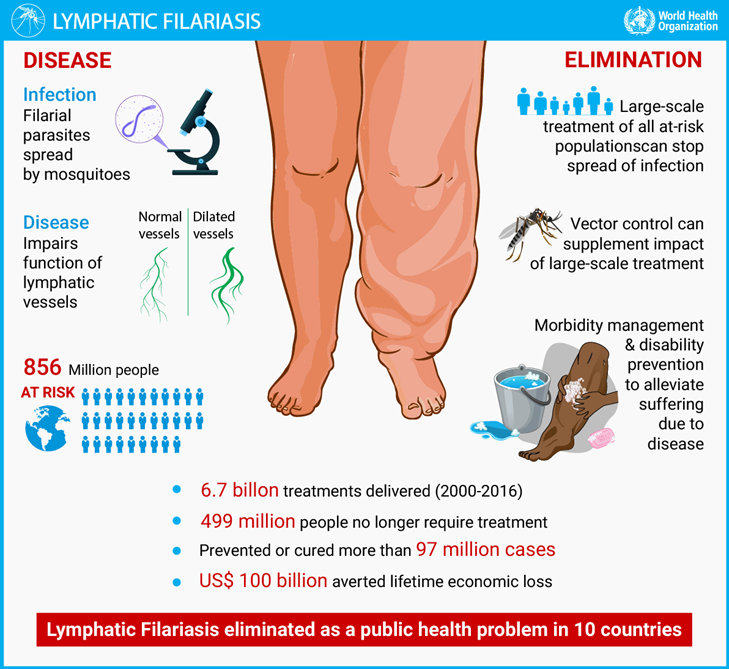
https://www.thehindu.com/news/national/health-ministry-launches-nationwide-campaign-to-combat-filariasis/article66496233.ece#:~:text=The%20Union%20Health%20Ministry%20has,especially%20in%2010%20affected%20States.
Maharishi Dayanand Saraswati 200th Birth Anniversary
Why in news? Recently, Prime Minister inaugurated the year-long celebrations commemorating the 200th birth anniversary of Maharishi Dayanand Saraswati in Delhi.

About:
- Maharishi Dayanand Saraswati was born on 12th February 1824 in Tankara, Gujarat in a Brahmin family.
- He was earlier named Mool Shankar He made Swami Virajananda his Guru.
- American Spiritualist Andrew Jackson Davis called Maharishi Dayanand the “Son of God".
- Socio-Religious
- He gave a call of ‘Back to Vedas’ and established Arya Samaj in 1875.
- He was the first to give call for Swaraj as "India for Indian" in 1876.
- He believes in Hinduism but rejected man-maderitualism and worship of idols.
- He started Shuddhi Movement wherein purification was imparted to those who sought their way back to Hinduism.
- Educational Reforms
- Set up a number of Gurukuls to teacthe h knowledge of Vedas.
- Dayanand Anglo Vedic College Trust and Management Society was established by his disciples.
- First DAV High School was established at Lahore in 1886 with Lala Hans Raj as its headmaster.
- Independence Struggle: His teaching influenced personalities like Lala Lajpat Rai, Madam Cama, Ram Prasad Bismil, etc.
- Publications: Satyarth Prakash, Sanskarvidhi, Yajurved Bhashyam.
https://www.pib.gov.in/PressReleasePage.aspx?PRID=1898470
MIIRA - Edukemy Current Affairs
Why in news? India is planning to launch MIIRA- global initiative to coordinate millet research programmes at international level while also supporting research on millet crops.
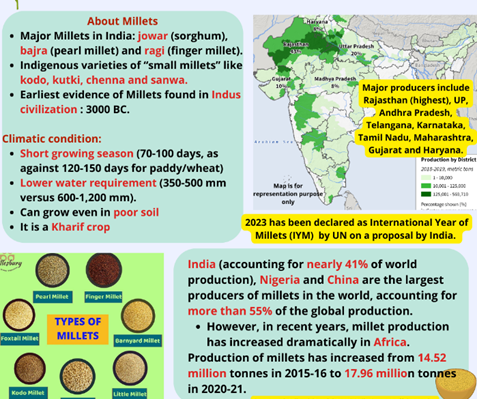
About:
- It is in line with UN declaring 2023 as the International Year of Millets and Centre’s plan to make India a global hub for millets.
- For MIIRA to take off, India will contribute the “seed money” while each G20 member will later have to contribute to its budget in the form of a membership fee.
- The Indian Institute of Millet Research in Hyderabad will be supported as the Center of Excellence for sharing best practices, research, and technologies at the international level.
- MIIRA secretariat will be in Delhi.
- About Millets: Millets are food grains having high nutritional features and health benefits and are cultivated with minimal water & inputs.
https://indianexpress.com/article/india/miira-india-readies-plan-to-popularise-millets-on-world-stage-8441002/
Bhashini Mission - Edukemy Current Affairs
Why in news? Government integrates Bhashini Mission's capabilities with UPI ecosystem to make digital payments through UPI 123 Pay available in more than 20 local Indian language.
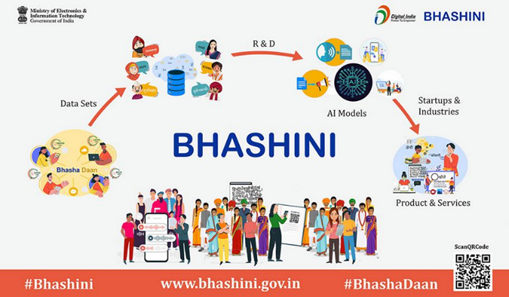
About:
- Bhashini Mission was launched by the Ministry of Electronics & Information Technology (MeitY).
- It is a local language translator mission that aims to break the barrier between various Indian tongues by using technology.
- This platform will make Artificial Intelligence (AI) and Natural Language Processing (NLP) resources available to Indian MSMEs, startups, and innovators in the public domain.
- Bhashini platform is interoperable and will catalyze the entire Digital Ecosystem.
https://economictimes.indiatimes.com/tech/technology/govt-integrates-bhasini-missions-capabilities-with-upi-ecosystem/articleshow/97781814.cms
PFAS or Forever chemicals - Edukemy Current Affairs
Why in news? A new study has found alarming levels of toxic PFAS, also known as “forever chemicals” in Norwegian Arctic ice which may affect wildlife.
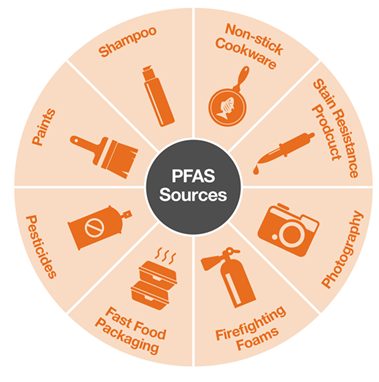
About:
- PFAS (Per- and polyfluorinated alkyl substances) are a large chemical family of over 4,700 highly persistent chemicals that don't occur in nature.
- They hardly degrade in the natural environments and have been found in blood of people and wildlife all round world. It can be toxic to both humans and wildlife.
- PFAS uses: In cosmetics (hair conditioner, foundation cream, sunscreen, etc.), electronics (smartphones), textiles (waterproof outdoor clothing and equipment, carpets, mattresses), etc.
- Impact: These chemicals are linked to a number of diseases including cancer, liver disease, They can lead to thyroid disruption, reduced responses to vaccination, and other health problems.
https://www.reuters.com/markets/commodities/eu-considers-ban-forever-chemicals-urges-search-alternatives-2023-02-07/
India's IPEF Strategy: Boosting Economic Resilience
Context: Recently, India started hosting a four-day long, third in-person, ministerial special negotiations session of the Indo-Pacific Economic Framework (IPEF).
About
- IPEF is a US-led initiative that aims to strengthen economic partnerships among participating countries to enhance resilience, sustainability, inclusiveness, economic growth, fairness, and competitiveness in the Indo-Pacific region.
- It was launched in 2021 with a dozen initial partners who together represent 40% of the world GDP.
- The IPEF allows members to negotiate on trade but it is not a free trade agreement. The negotiations will be along four main “pillars”.
- Supply-chain resilience
- Clean energy, decarbonization & infrastructure
- Taxation & anti-corruption
- Fair & resilient trade.
- Currently, Australia, Brunei, Fiji, India, Indonesia, Japan, South Korea, Malaysia, New Zealand, Philippines, Singapore, Thailand, United States, and Vietnam are members of IPEF framework.
India Agenda
- First and foremost, supply chain resilience has come to be the key issue for India’s interlocutors at IPEF deliberations.
- To redress the core vulnerabilities of MSMEs.
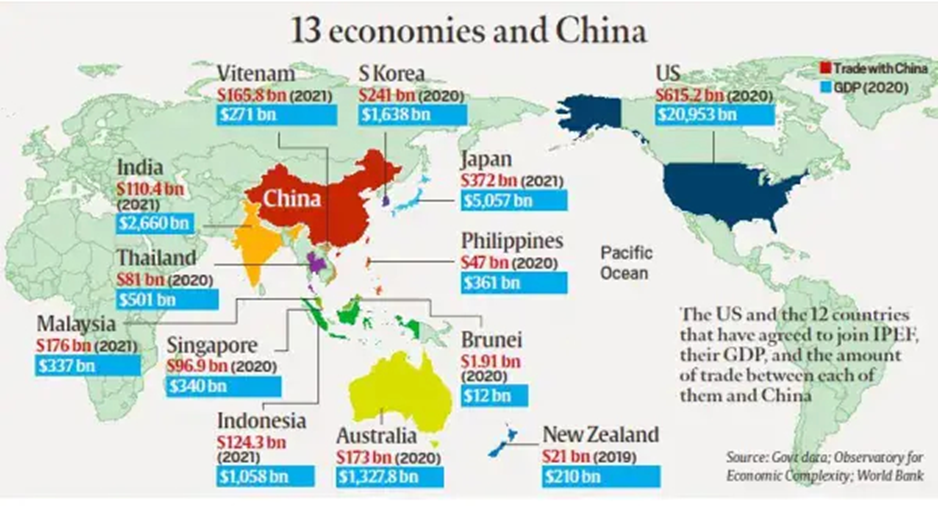
https://www.firstpost.com/opinion/can-ipef-help-india-reach-its-target-of-5-trillion-economy-by-2025-12127842.html
MicroLED Displays - Edukemy Current Affairs
Context: Apple’s shift to microLED display technology is reportedly under process and it is considered as the next big transition in display technology.
 About
About
- MicroLEDs are self-illuminating diodes that have brighter and better color reproduction than Organic Light Emitting Diode (OLED) display technology.
- The basis of microLED technology is sapphires. A sapphire can shine on its own forever. A microLED screen is filled with such small but strong light. The picture in a microLED screen is generated by several individual light-emitting diodes.
Benefits of MicroLEDs
- MicroLED displays are brighter, have better color reproduction, and provide better viewing angles.
- Images appear as painted on top of the device’s glass and are quite a technological feat.
- MicroLEDs have limitless scalability, as they are resolution-free, bezel-free, ratio-free, and even size-free.
- The screen can be freely resized in any form for practical usage.
- MicroLEDs are self-emissive and also individually produce red, green, and blue colors without needing the same backlighting or color filters as conventional displays.
https://www.thehindu.com/todays-paper/2023-02-13/th_chennai/articleGCEASBMR3-2060624.ece
Share the article
Get Latest Updates on Offers, Event dates, and free Mentorship sessions.

Get in touch with our Expert Academic Counsellors 👋
FAQs
UPSC Daily Current Affairs focuses on learning current events on a daily basis. An aspirant needs to study regular and updated information about current events, news, and relevant topics that are important for UPSC aspirants. It covers national and international affairs, government policies, socio-economic issues, science and technology advancements, and more.
UPSC Daily Current Affairs provides aspirants with a concise and comprehensive overview of the latest happenings and developments across various fields. It helps aspirants stay updated with current affairs and provides them with valuable insights and analysis, which are essential for answering questions in the UPSC examinations. It enhances their knowledge, analytical skills, and ability to connect current affairs with the UPSC syllabus.
UPSC Daily Current Affairs covers a wide range of topics, including politics, economics, science and technology, environment, social issues, governance, international relations, and more. It offers news summaries, in-depth analyses, editorials, opinion pieces, and relevant study materials. It also provides practice questions and quizzes to help aspirants test their understanding of current affairs.
Edukemy's UPSC Daily Current Affairs can be accessed through:
- UPSC Daily Current Affairs can be accessed through Current Affairs tab at the top of the Main Page of Edukemy.
- Edukemy Mobile app: The Daily Current Affairs can also be access through Edukemy Mobile App.
- Social media: Follow Edukemy’s official social media accounts or pages that provide UPSC Daily Current Affairs updates, including Facebook, Twitter, or Telegram channels.

